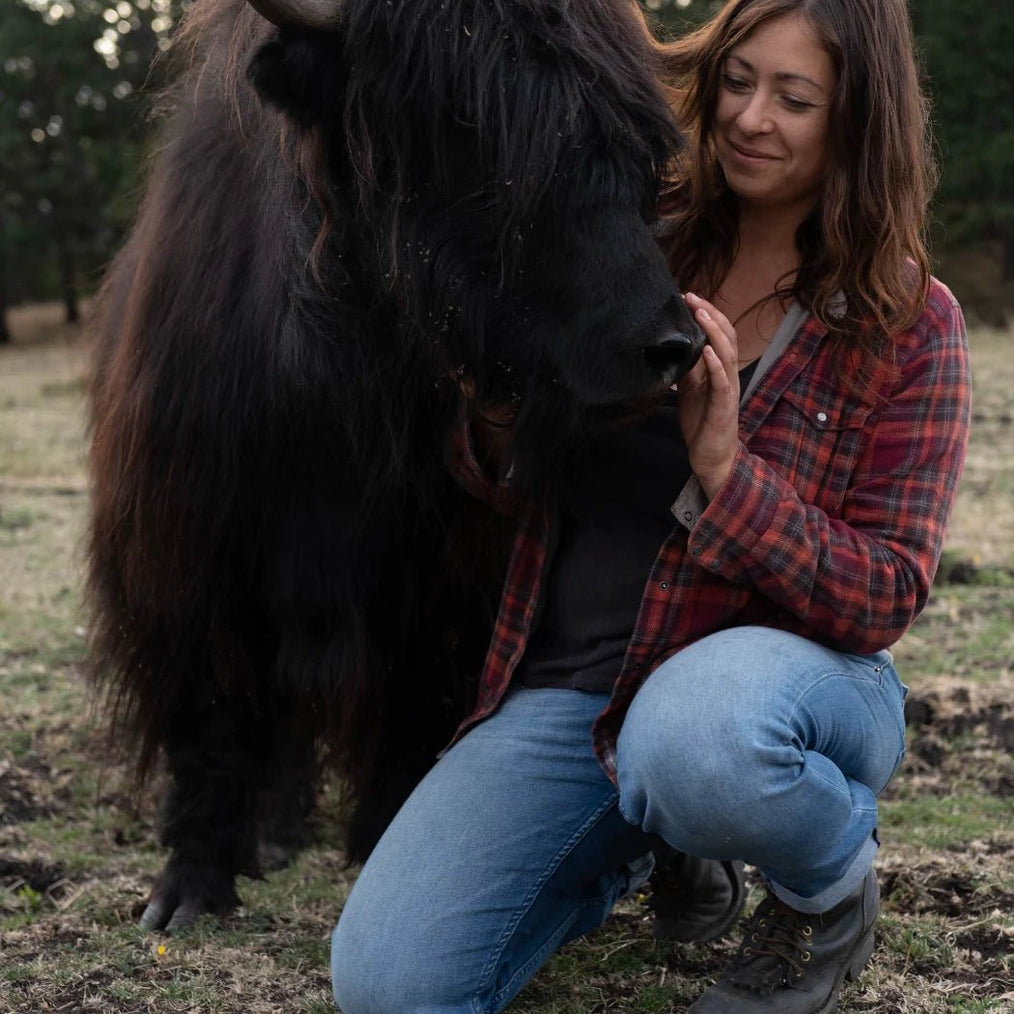Yak Produce both an outer and inner fiber; yak fiber has multiple uses and is highly prized. There are three types of yak fiber. The outer fiber (79-90 microns) has historical and contemporary uses in the Tibetan Plateau for making strong tents. The mid length fiber (20-50 microns) is used to make outerwear, ropes, rugs, and blankets. The final inner layer is down (16-20 microns). Similar to cashmere, it has an increasing following in the fashion industry, being recognized for its softness, warmth, and luxury appeal. It is warmer than merino wool and does not contain lanolin like sheep’s wool.
The quality of yak fiber can vary greatly from one yak to the next. Quality depends on genetics, nutrition and environment. Different bloodlines and phenotypes yield very different quantity and quality of fiber for collection in the Spring months. Fiber quality and production also changes over the lifetime of the animal. As they mature, they develop an increasing layer of fat on the exterior of their body, helping maintain body temperature and reducing the need for heavy fiber production.
A longitudinal study is under way to examine this change in individual animals, which should yield interesting results. Poor nutrition, health issues or warm winters can also affect fiber production. In general, the best and highest quality down is harvested from the first shed of baby yak calves, and into their second shed as yearlings. After this point, it is mainly determined by their individual production levels and the factors listed above. Steers tend to have higher fiber production than bulls due to their lack of hormones, and can make excellent fiber pets over the long term.
Color
There are three main color patterns in the US, royal, solid and trim. Royal is a black and white piebald pattern. This typically occurs with the majority of black on the shoulders, although randomized patterns exist. A “blanket -back” royal is one on which the black color extends the length of the body, often with white tail, legs, neck and face markings. Solids are either Native Black, with a grey nose and black to brown coat or Imperial, with a black nose and generally darker black coat. Trims are either Native black or Imperial, with a white star or stripe on the head, and potentially white on the tail and feet. Other colors in the US are white and golden. These color genetics have been a somewhat controversial topic in the yak breeding community over the years. The white color is more of a rich cream compared with the white on the coat of a royal. These were historically created by adding Charolais cattle into the yak gene pool. Many of the current examples of white yak have been responsibly bred to now have a very low level of cattle introgression and qualify as yak by both registries in the US. Goldens range in tones from tan to rich brown. Similarly, the golden color, which is varying shades of brown to tan, have been registered early on in the formation of the foundation book in the US, prior to more detailed genetic testing that is now available. It will be fascinating to see the origin of these color traits as scientific advancement gives us more data.
In our breeding program, we believe that color genetics are of secondary importance to the overall soundness of the animal, including temperament, conformation, health, genetic background and resilience. We love all the colors and our breeding program emphasizes genetic diversity and values these traits above all else.
http://www.iyak.org/yak-fiber.html




